A Sangoma ceremony in South Africa
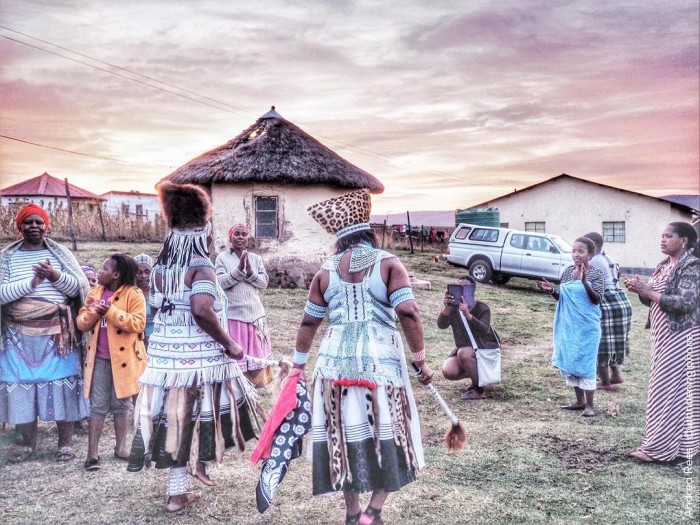

Elephant crossing.
A common scene in Kruger National Park in South Africa. Kruger is one of Africa’s largest game reserves at nearly 2 million hectares in size. It is 360 kilometres from North to south and 65 kilometres from east to west and extends into 2 provinces, Mpumalanga and Limpopo. It is home to diverse landscapes from the plains where the cheetah roam, to rocks and bushes where the leopard hide. You can self-drive from sunrise up to sunset. It is one of my favourite places in the world.
About 30 minutes from the centre of Cape Town lies Khayelitsha, a Township, home to over 1 million residents. In the heart of Makhaza, a neighbourhood in Khayelitsha is eKhaya eKasi Art & Education Centre. It is home to The Heart of a Woman Project in South Africa, a women’s mobile photography and digital literacy initiative I founded in 2013.
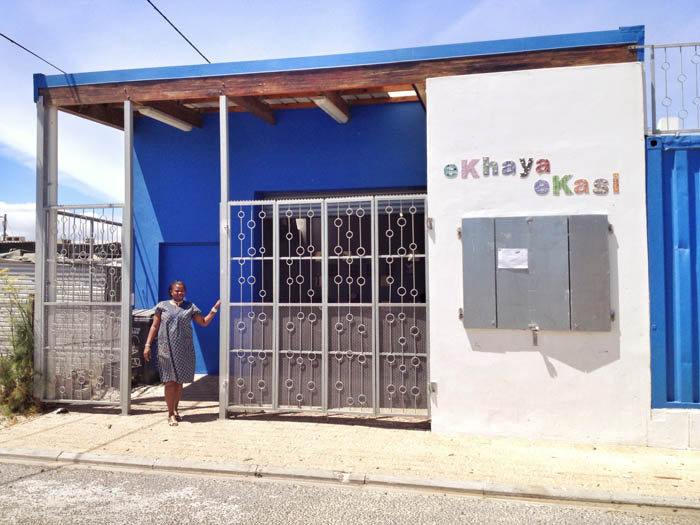
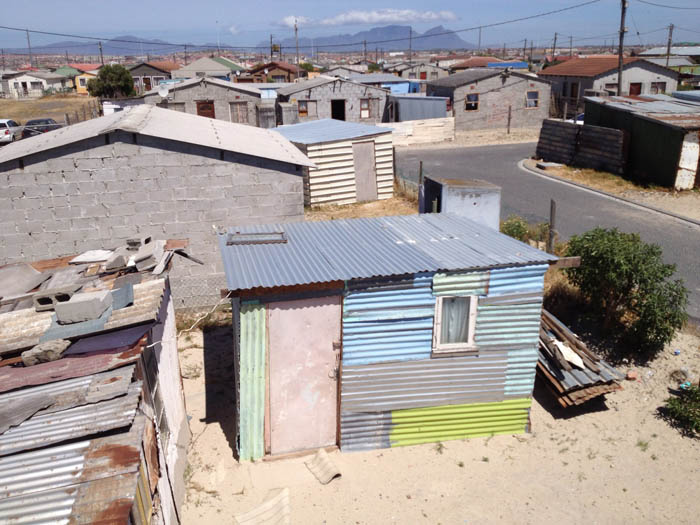
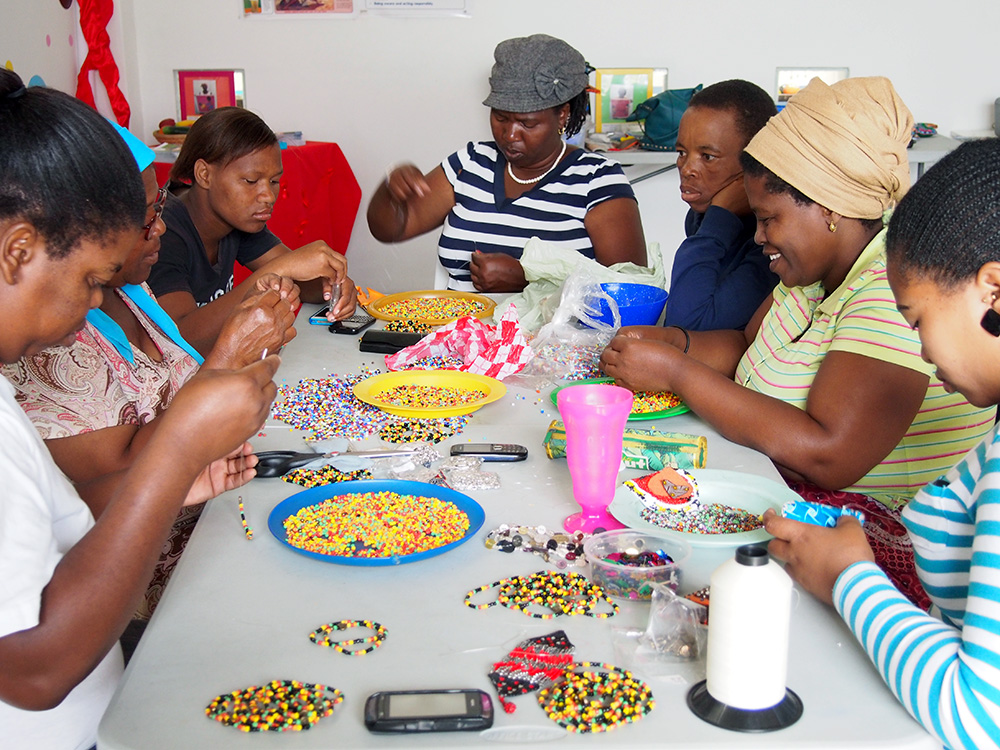
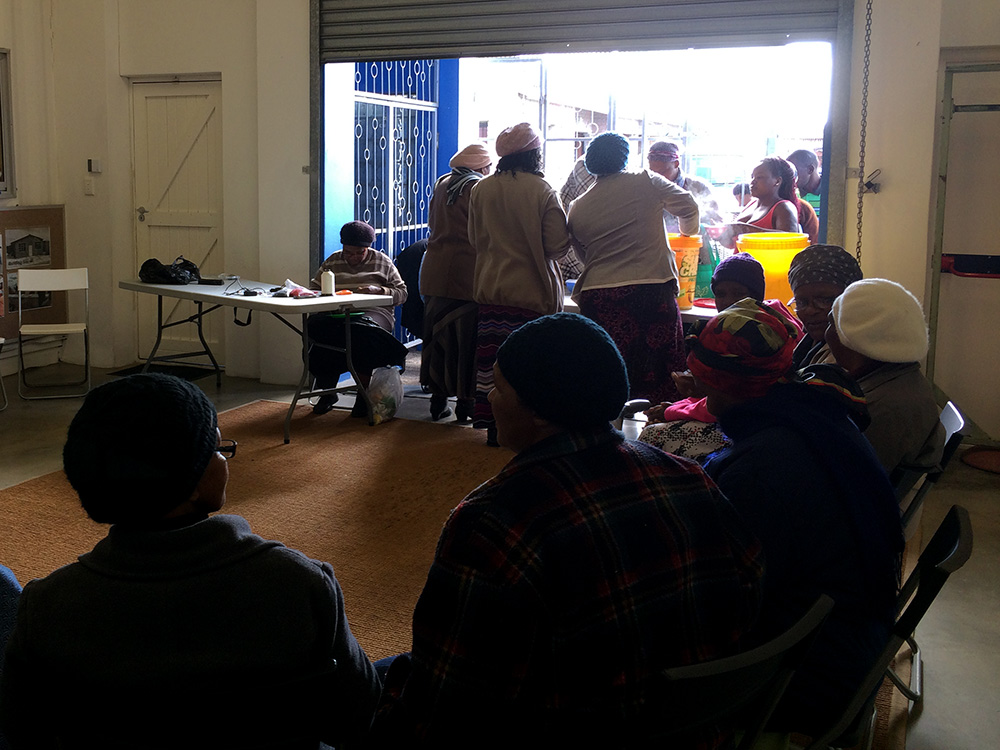
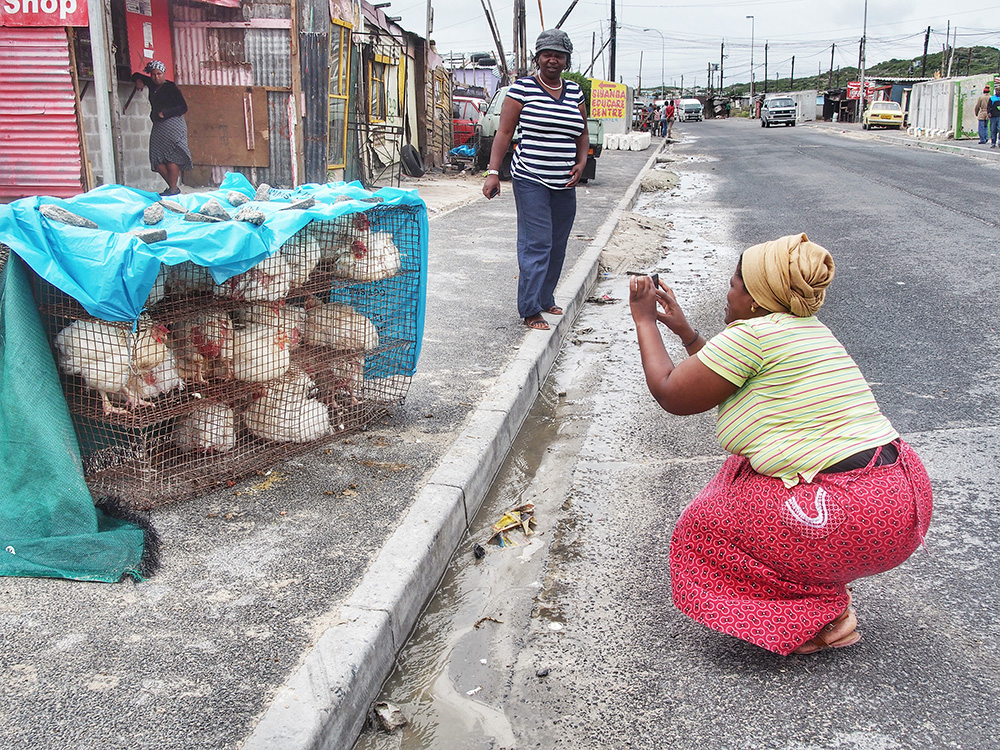
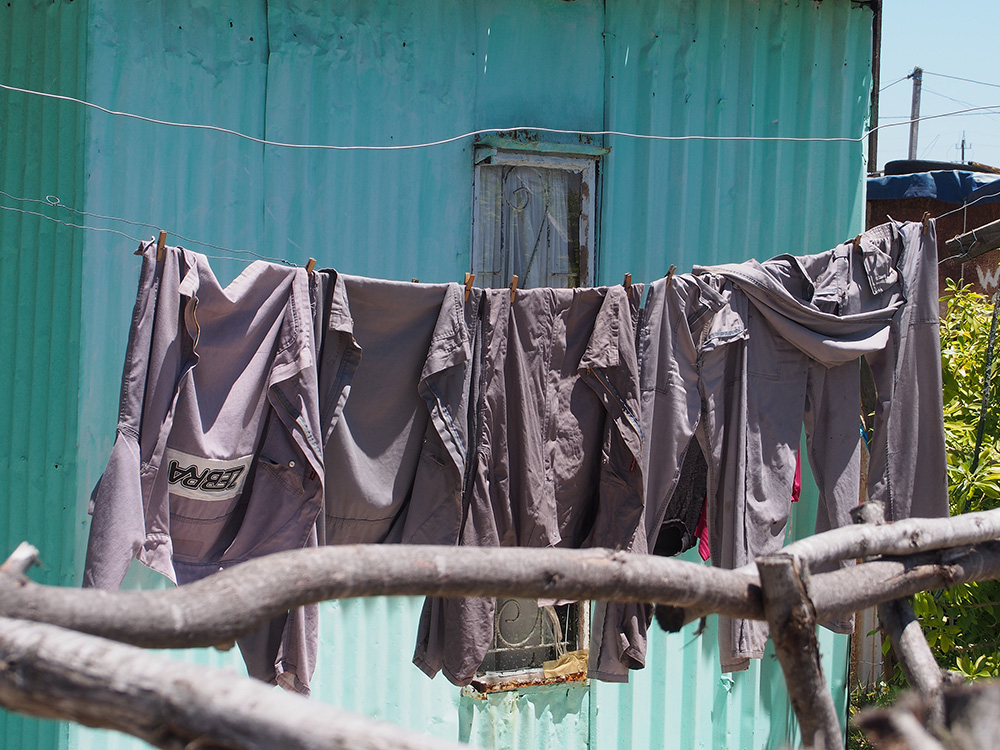
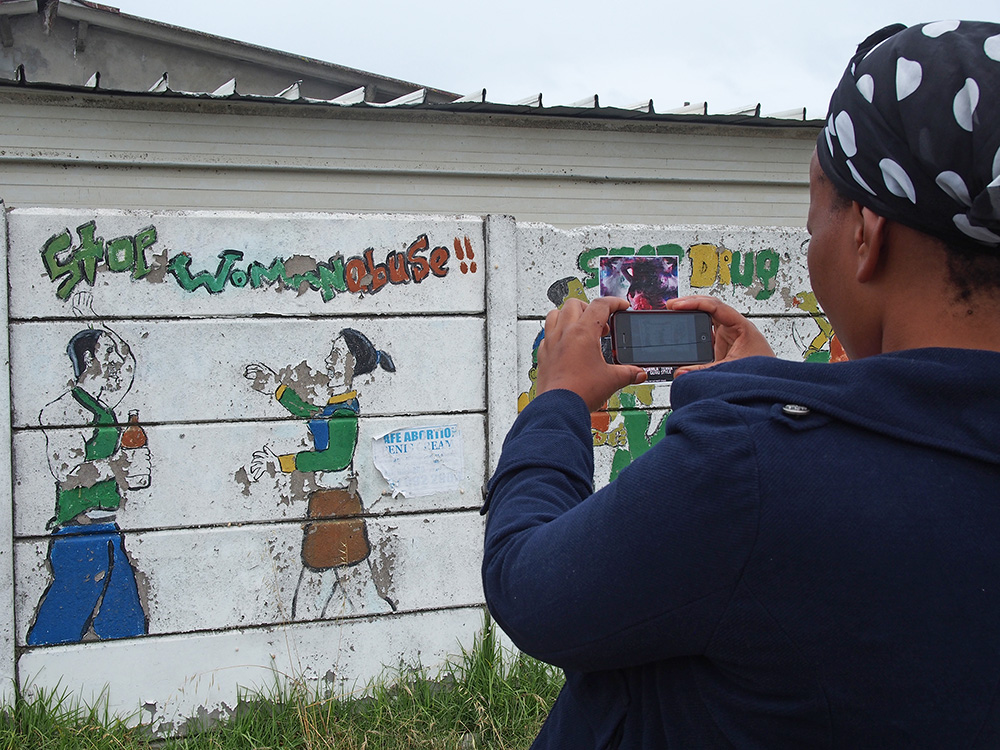
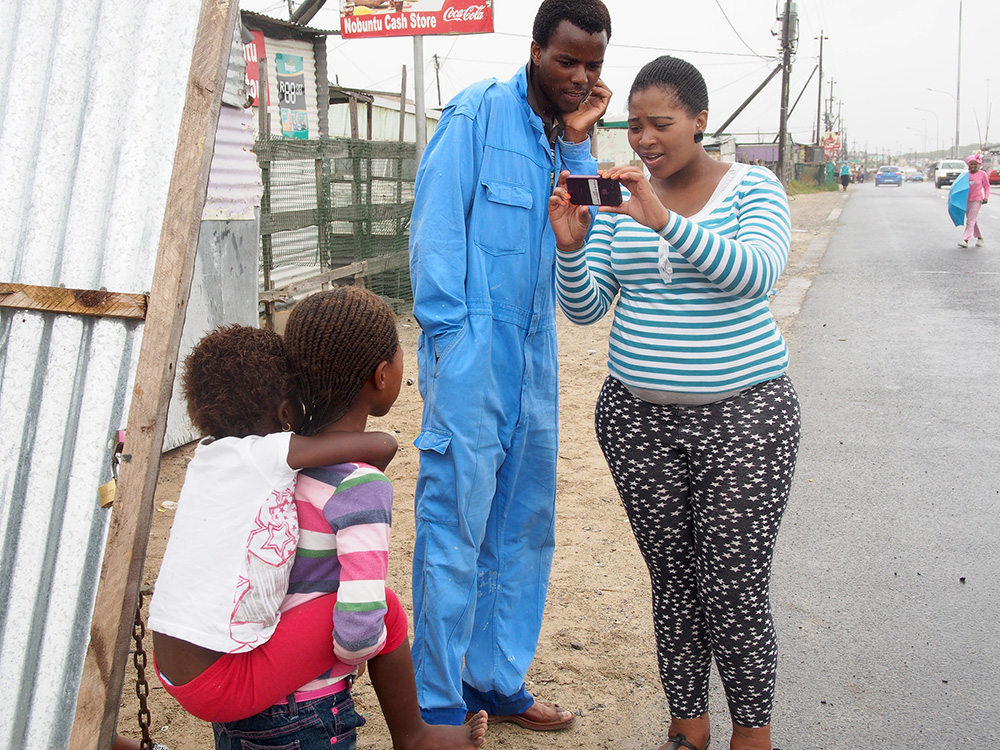
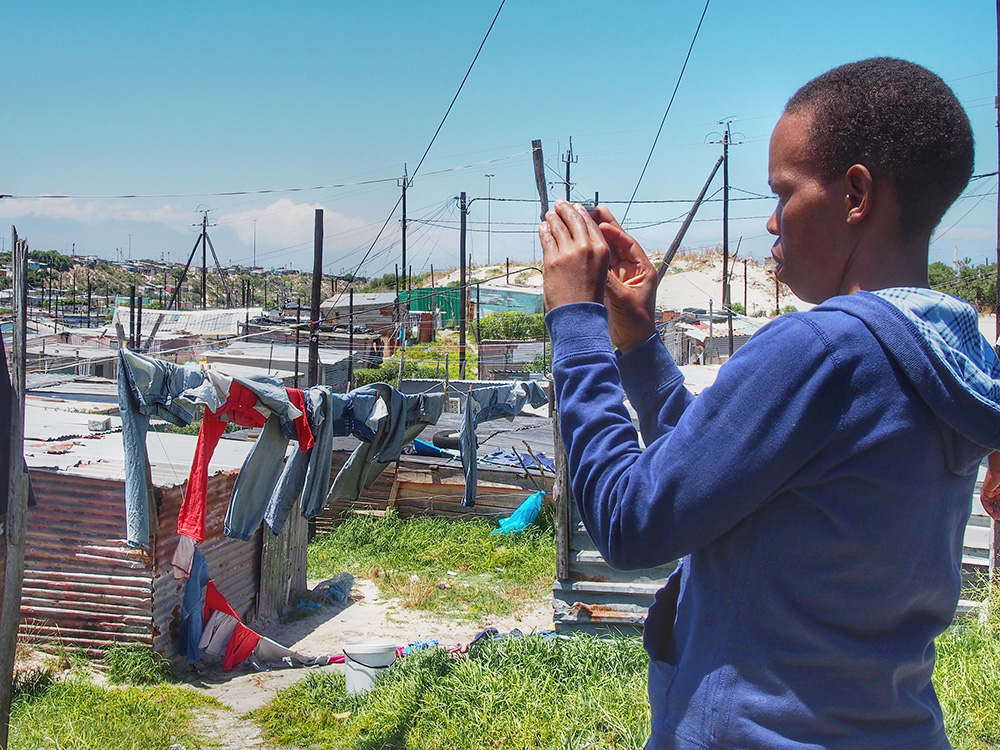
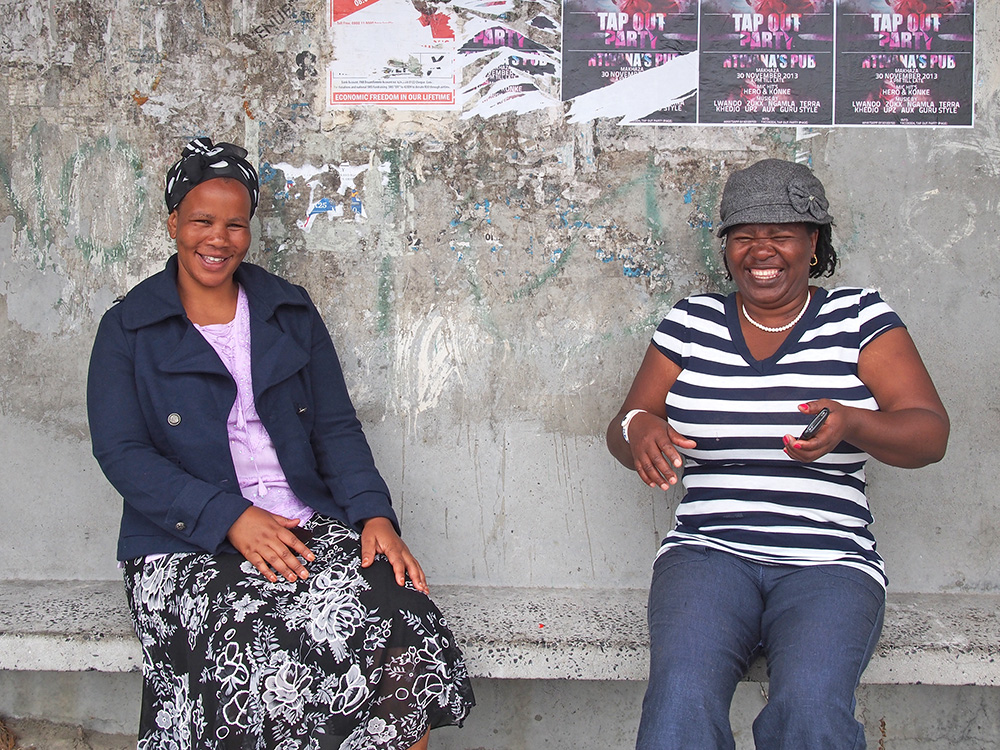
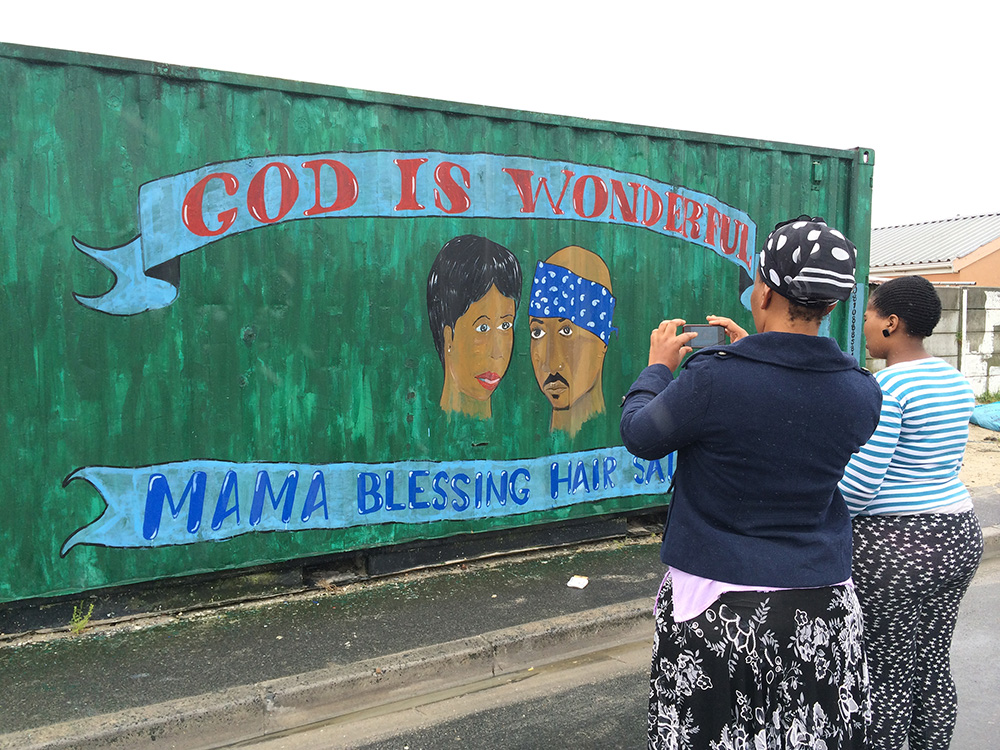
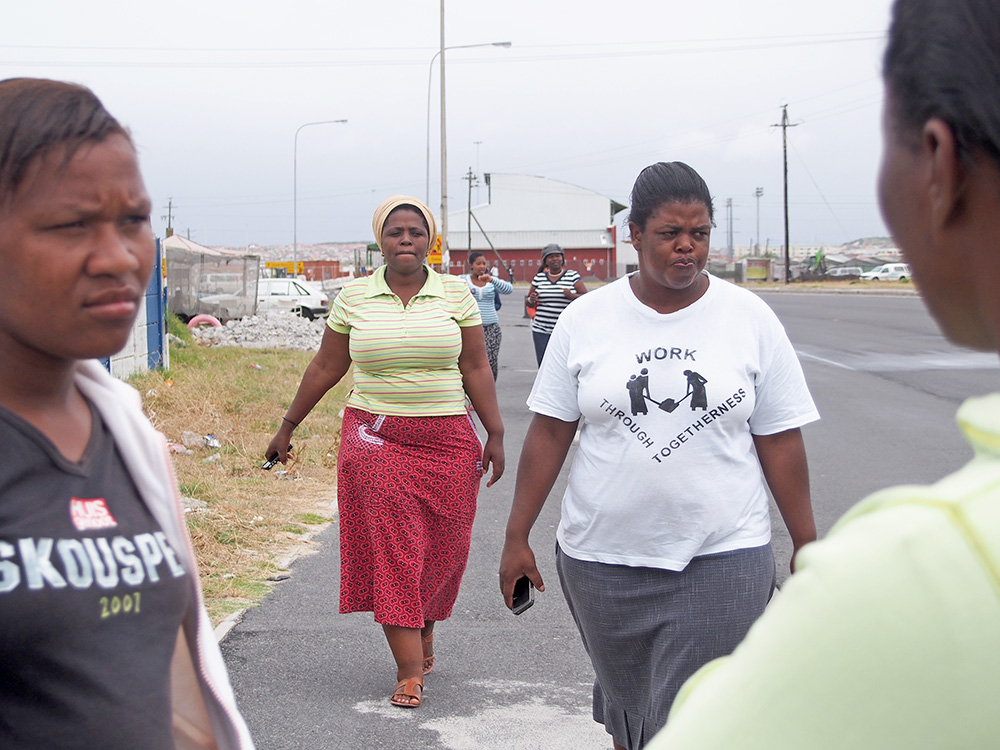
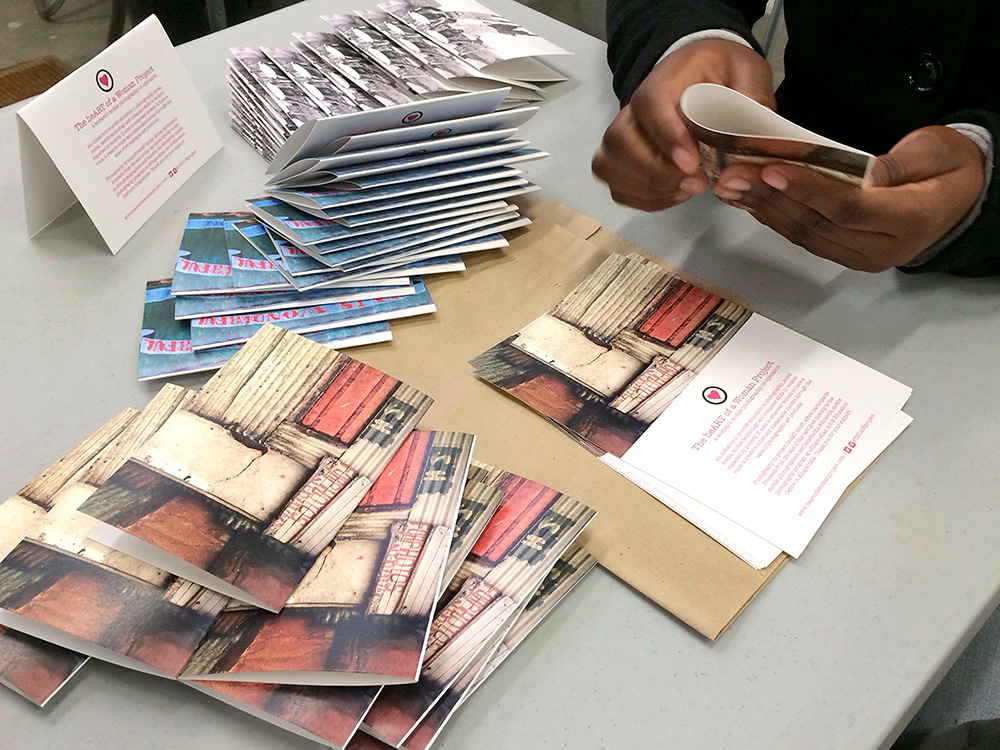
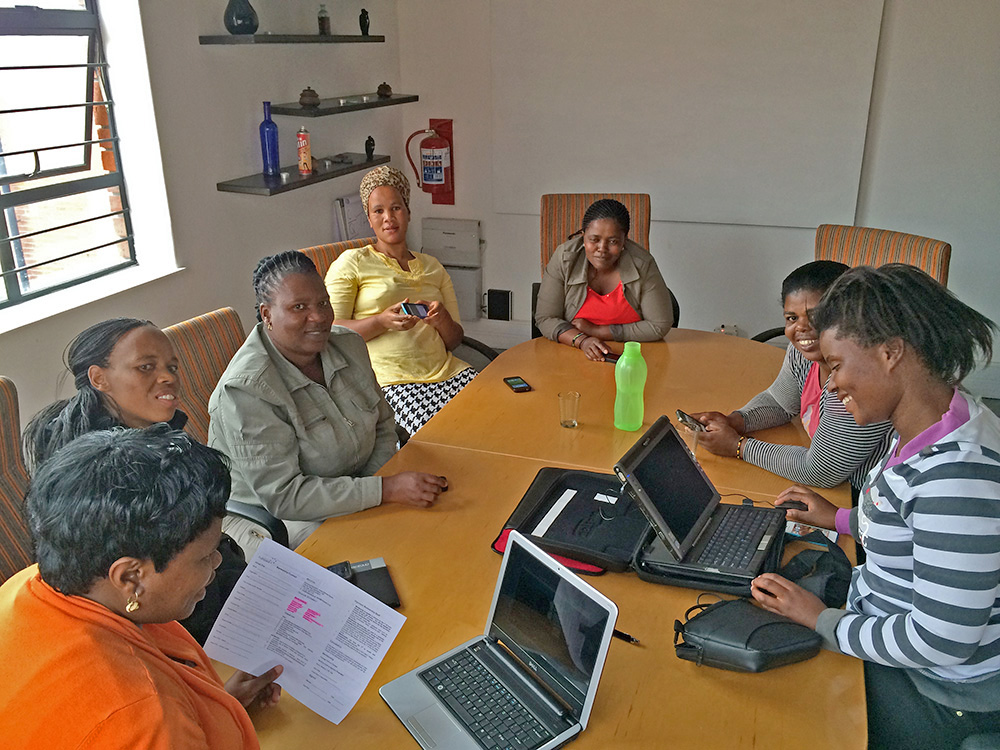
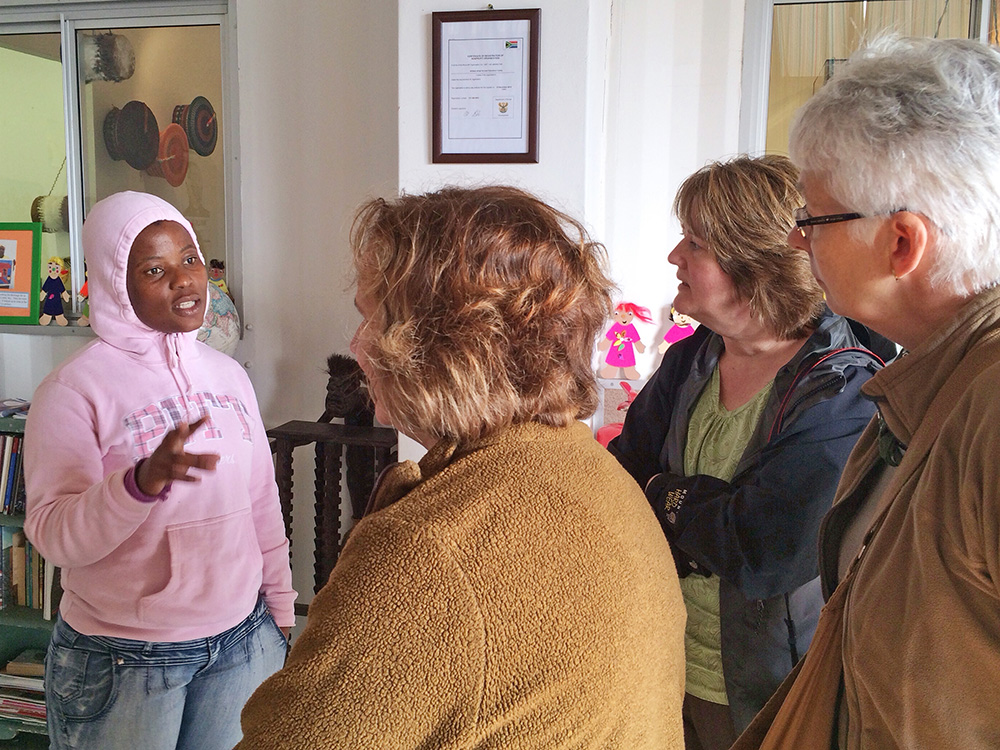
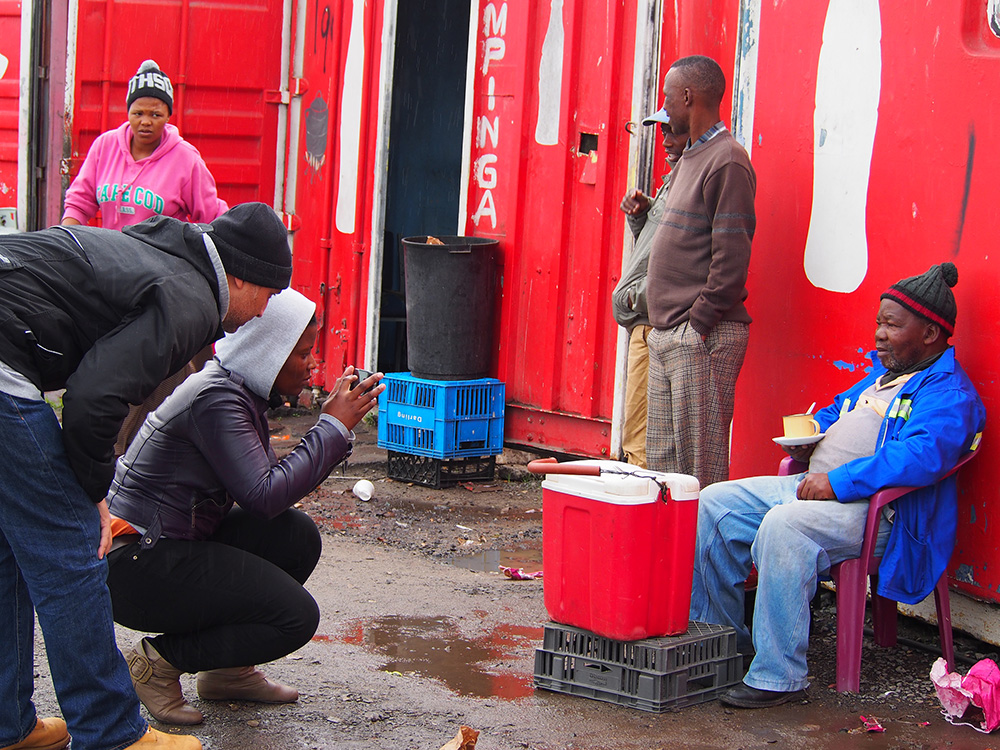
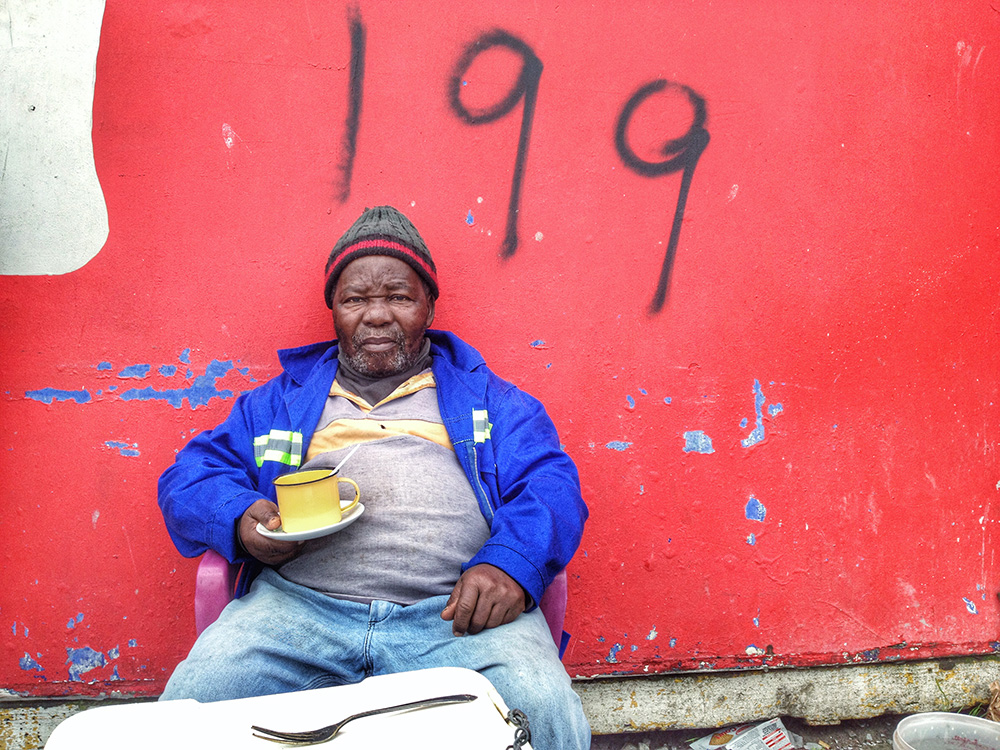
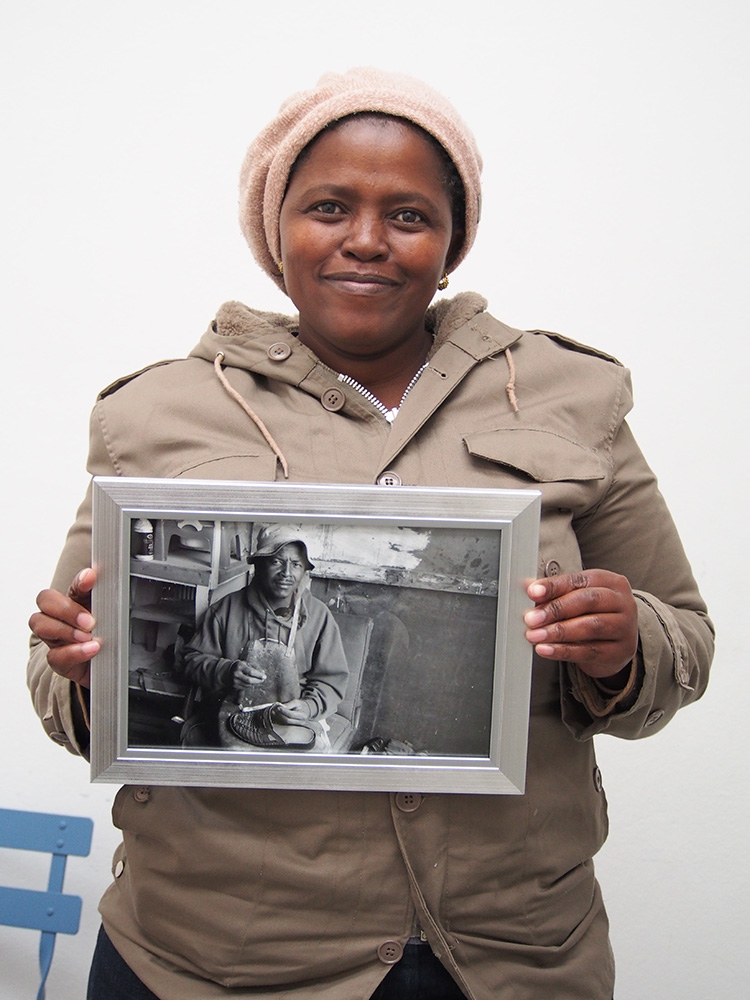
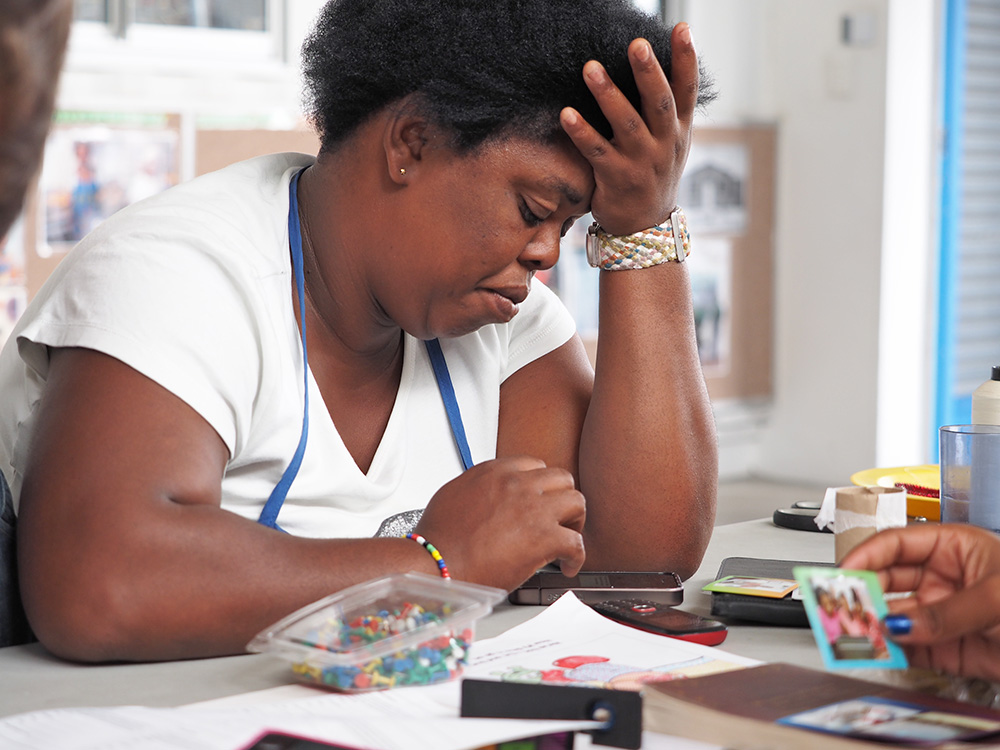
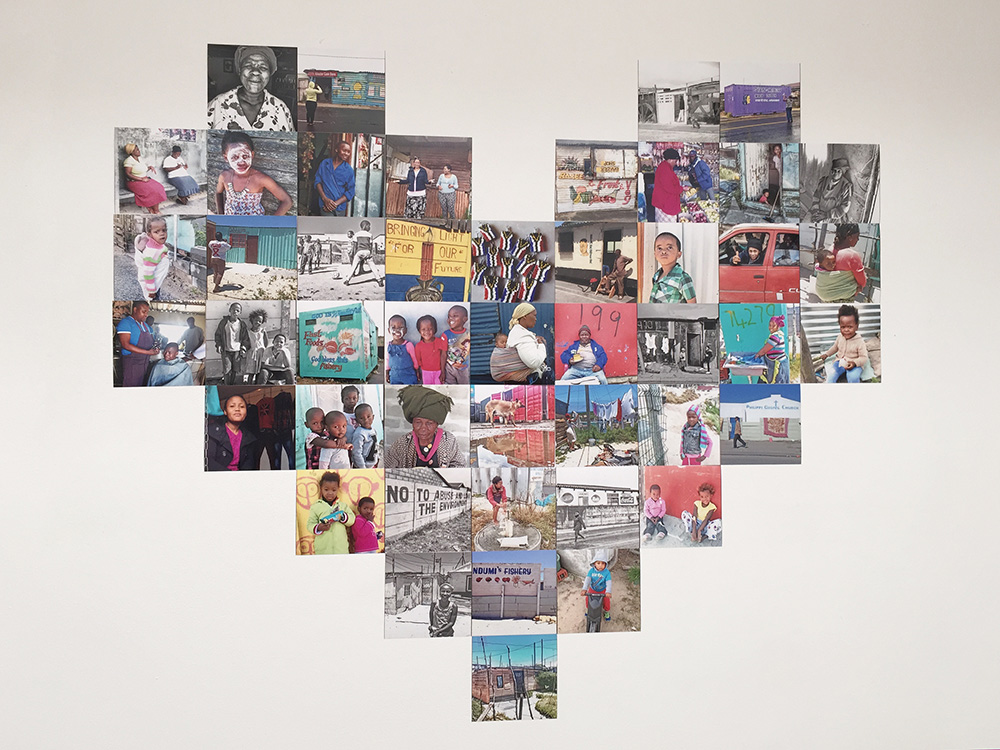
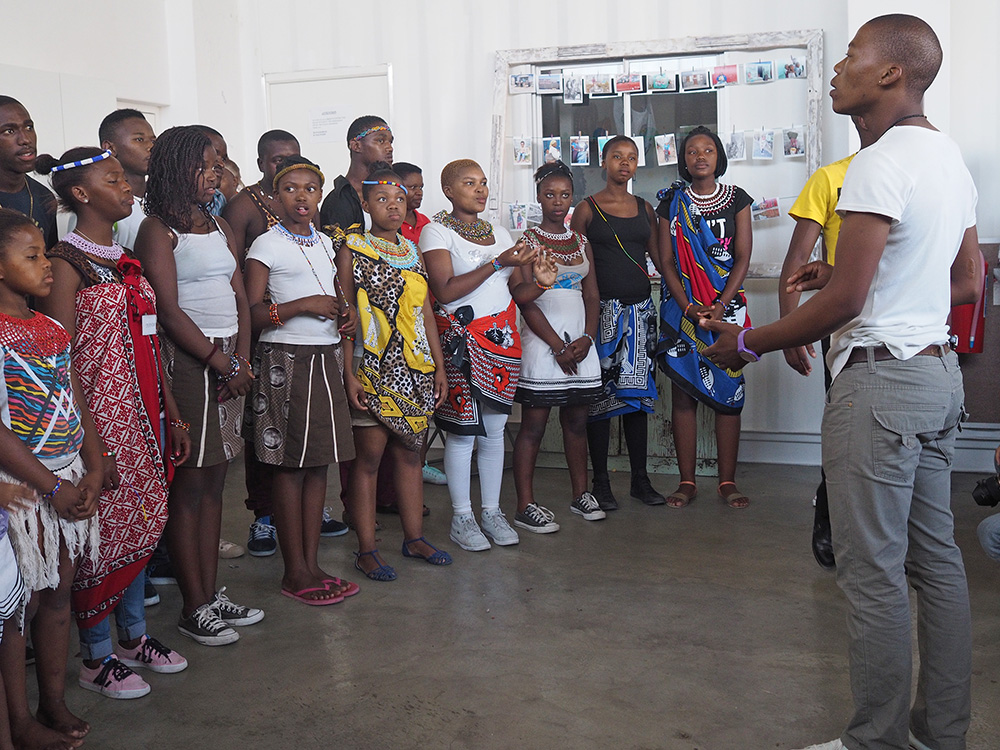
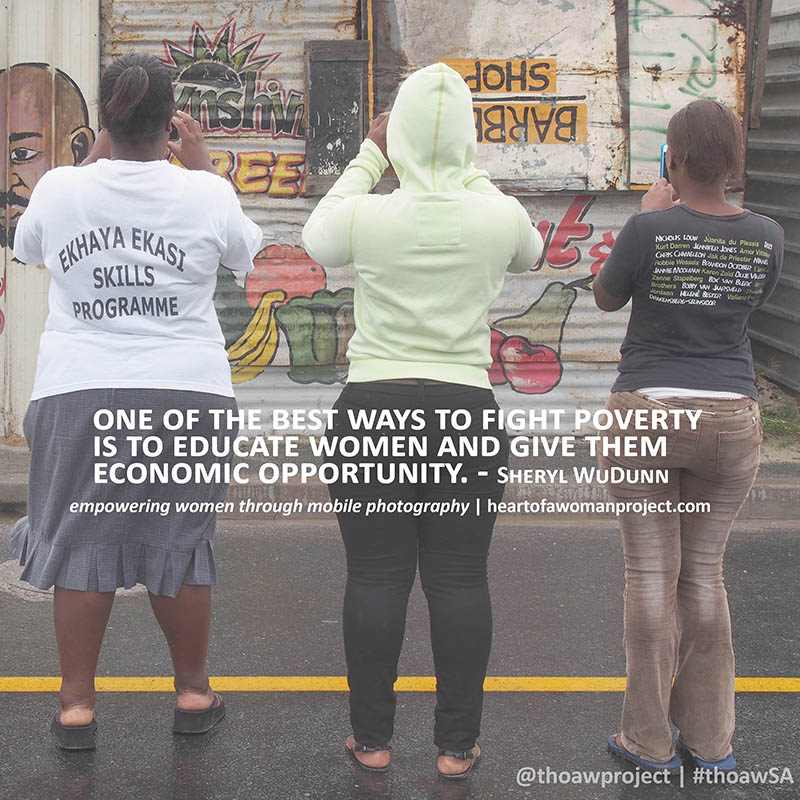
eKhaya eKasi generates income through product sales in its on-site art boutique, business to business orders and through tourism. The art boutique focuses on handmade crafts such as shwe shwe heart ornaments and bags, bead and wire products and photography products by artists in the women’s skills development programs, from the community and other areas of South Africa.
The goal is to draw tourists into a community that did not previously have tourism, offer cultural exchange and to provide economic opportunity to the artists and residents that partner and work with the centre.
Every sale and visit offer travellers an opportunity to visit projects that are making a difference in their communities, contribute to the local economy and make a difference with your purchases.
Visiting Cape Town?
Have you been thinking of a family trip to South Africa? Is family travel in South Africa possible? Can you go on a safari with kids? Can a 4 year old go on safari? Can a 9-year old go on safari? YES. YES. YES. YES and YES.
South Africa is one of my favourite countries in the world, and Cape Town is my favourite city. It’s also one of our favourite places for a family trip. So much so that we’ve been to South Africa twice as a family of 4.
If you’ve been following me on social media or here on the blog, you would have heard of The Heart of a Woman Project, a women’s mobile photography initiative I started in 2013 at eKhaya eKasi Art & Education Centre in Khayelitsha.
I have visited South Africa ten times; twice with my husband and 2 sons who were 9 & 4 the first time they visited. My father also joined me on three of those trips.
Here are some family travel tips for Cape Town, ideas of things to do with kids and information about doing a safari in South Africa with children.

Go on a meaningful tour with Uthando SA to visit development projects in the townships. Uthando is an award-winning fair trade tourism organization doing fantastic work. Your tour directly helps the development projects you visit; you will leave inspired.
Note: You can visit eKhaya eKasi with Uthando. Be sure to request them for your tour with Uthando.
Go to the lesser-known Boulders Beach in Simonstown where you can get off the path and take the boardwalk down to the beach for the best view of the penguins. Swim or splash in the ocean and have a picnic. Look for Boulders Beach Lodge and Restaurant on Google maps and enter the parking lot on Bellevue Road near the Simonstown Golf Club.
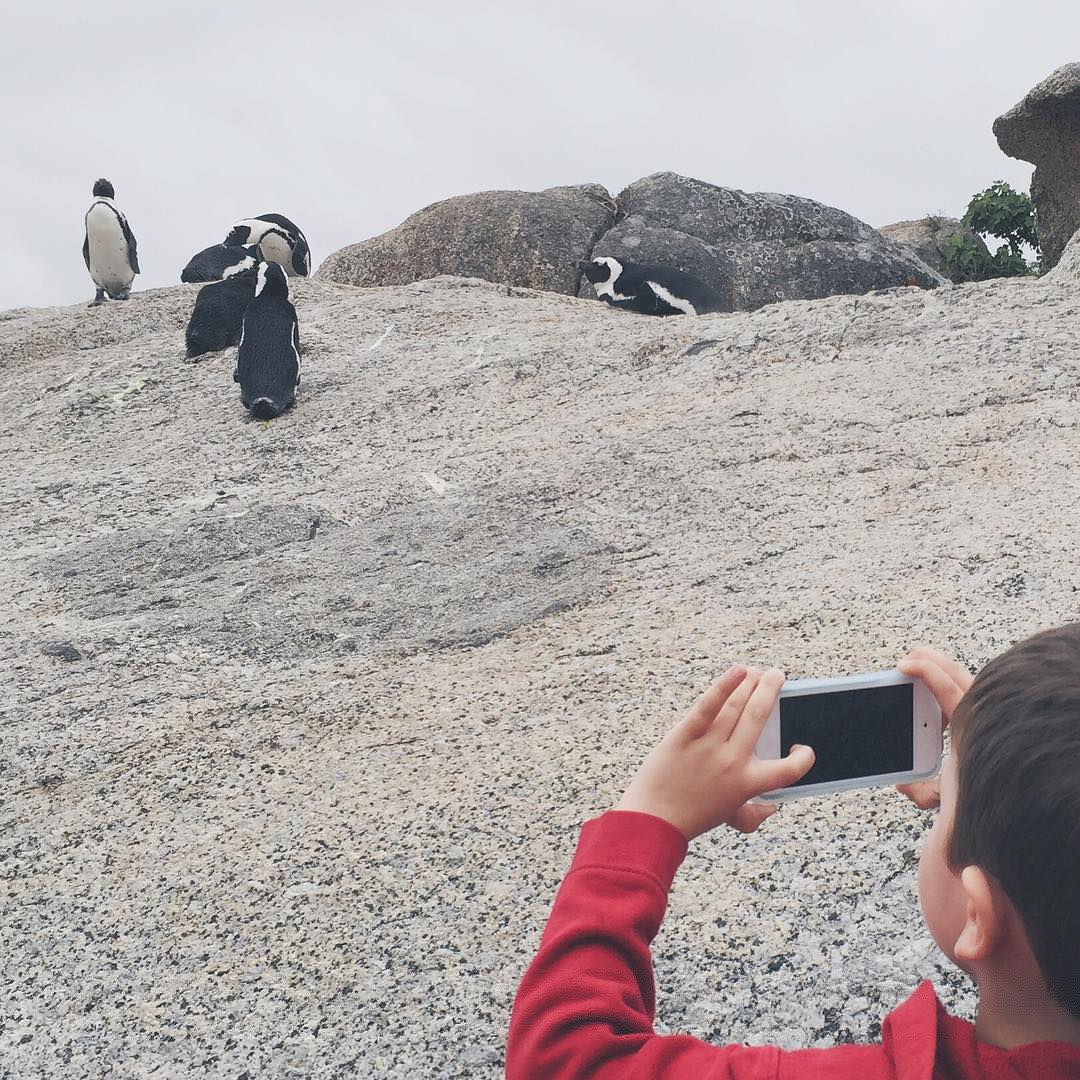
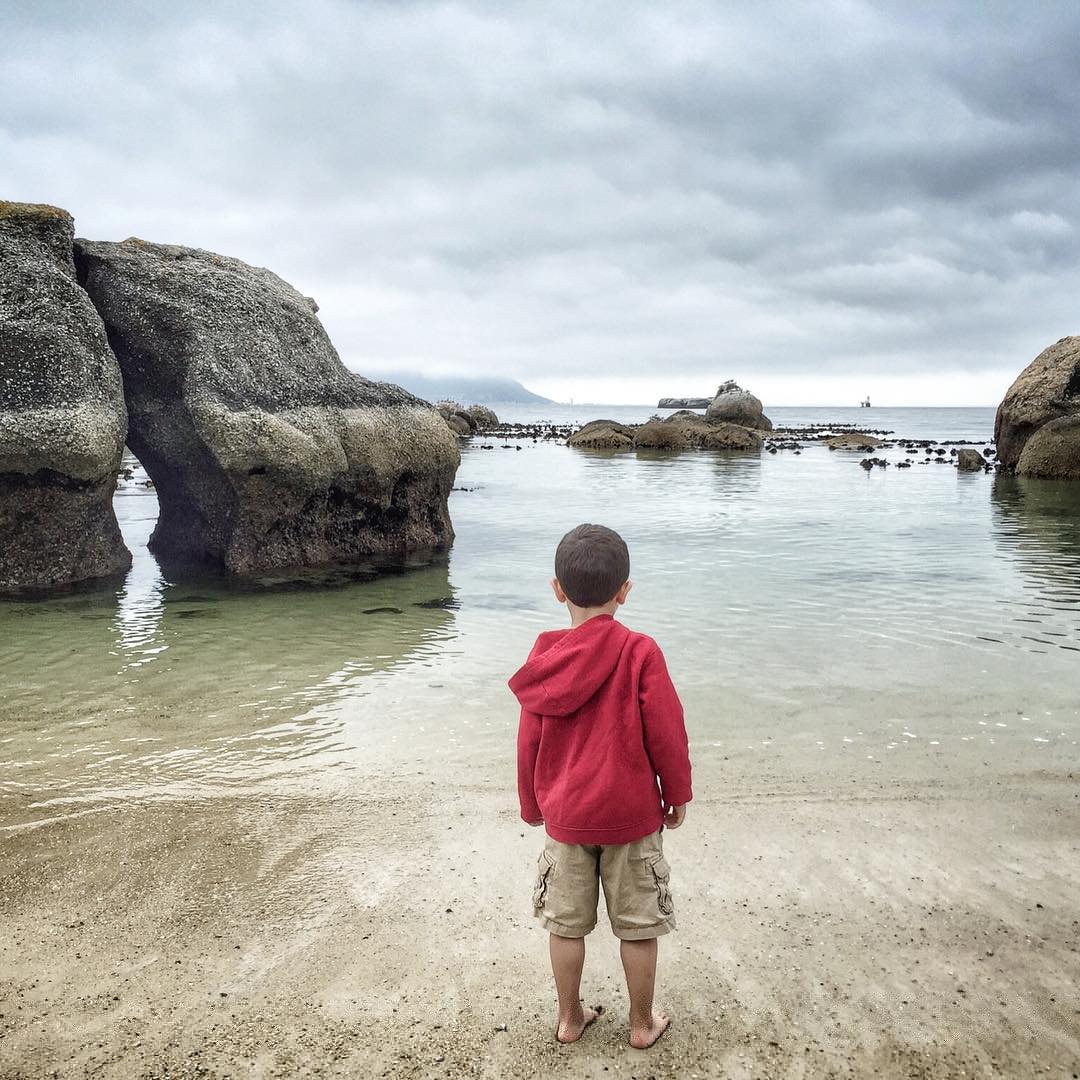
You can add a drive on the beautiful and winding Chapmans Peak Drive to your Boulders Beach visit. If you have the time, make sure to stop at the lookout points. Make a day of it and visit Cape Point and Cape of Good Hope too, passing smaller coastal towns. You might see ostriches, baboons, and seals. You can take the funicular or hike up to the Cape Point Lighthouse.
For a tour that covers the Chapman’s Peak, the penguins and the Cape Peninsula, check these tours out:
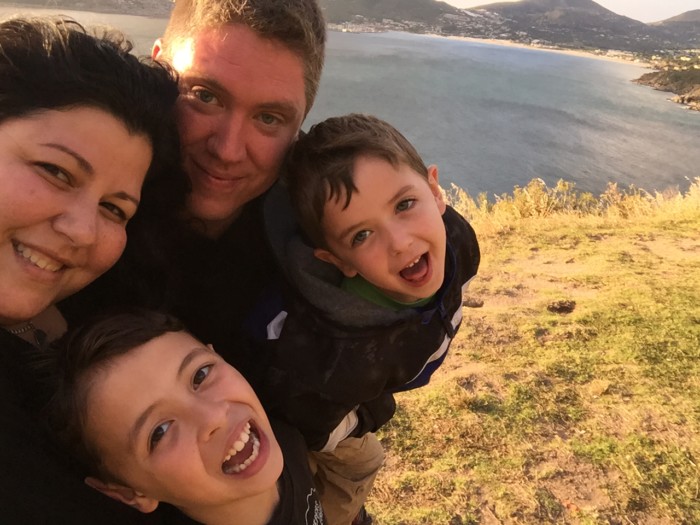
Visit beautiful coastal towns in the False Bay area of Cape Town. Plan a beach day or two or three in Muizenberg. Watch the surfers or go to the nearby waterslides or mini golf (seasonal). There is a playground at the main beach at Surfer’s Corner and plenty of restaurants. Have a falafel at Yoffi’s, go to the Friday Night Market at Blue Bird Garage, have brunch and fresh pastries at Knead Bakery.
Be sure to visit the smaller and less busy St. James Beach, they have the infamous colourful beach huts (change rooms) too and a great tidal pool for swimming. Take a walk around Kalk Bay, visit the independent shops and galleries, have fish ‘n chips at Kalky’s, grab brunch with a view at Bootlegger’s and dinner at Satori’s.
Note: If you prefer to self-drive, you can easily add a visit to Kalk Bay, St. James and Muizenberg with your penguins/Chapmans Peak/Cape Peninsula trip depending on how much time you want to spend at each place. It will take a full day if you do it all. I highly recommend spending a few nights in Muizenberg if you have 4-5 days in Cape Town. It’s a world away yet close enough to the CBD and great fun for the whole family.
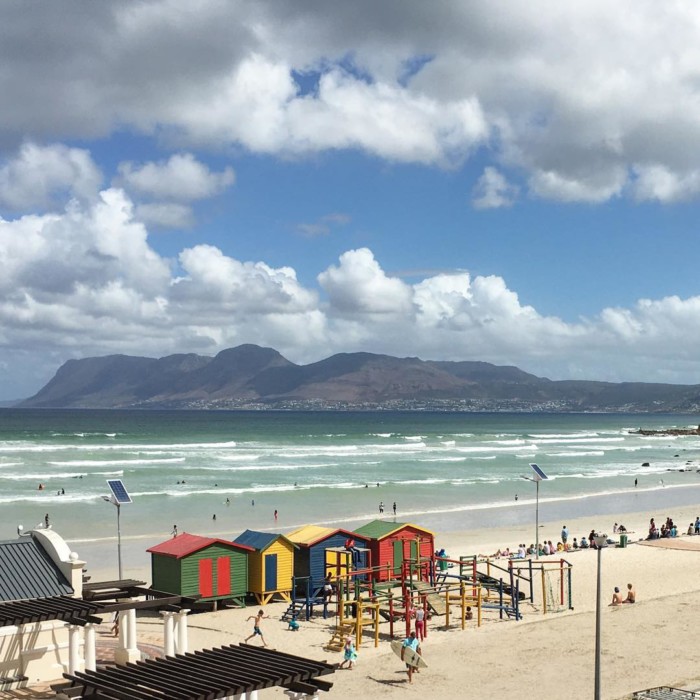
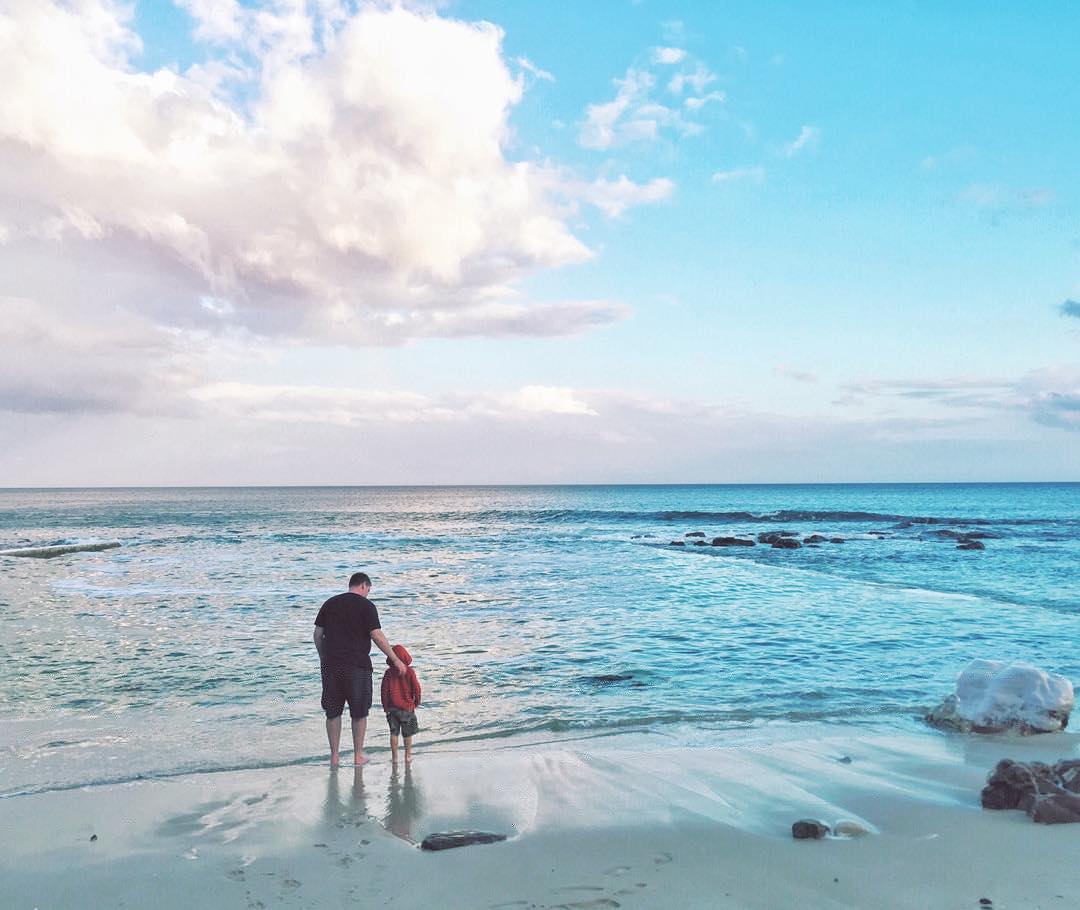
Because ducks, over 1000 ducks! I was surprised to find out how family-friendly a winery could be. I had no idea. Adults can enjoy a great meal and wine tasting while children play on the grounds and have a picnic. Vergenoegd offers child minding. You can come back together for the duck parade. Read Visiting Family Friendly Vergenoegd Wine Estate in Stellenbosch, South Africa
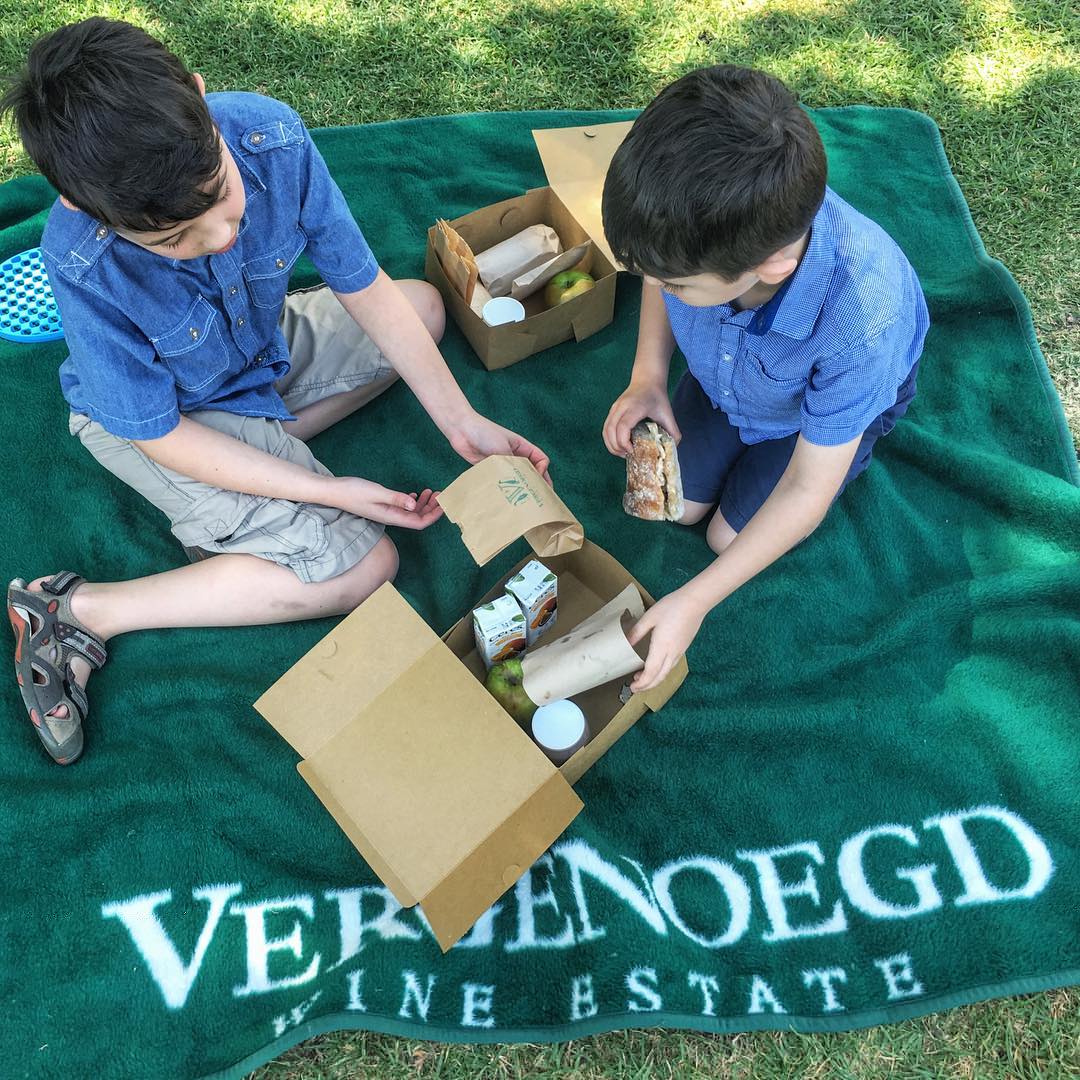
Catch the sunset from Signal Hill and a view of Robben Island, it’s free and it’s my favourite spot to see the sun dip into the ocean. Bring a picnic. At certain times of the year, the City Sightseeing bus can take you there, otherwise order an Uber or drive yourself.
Visit Table Mountain for a sunset and city view. Be sure to check the current conditions as it may be too windy at the top and it will close early.
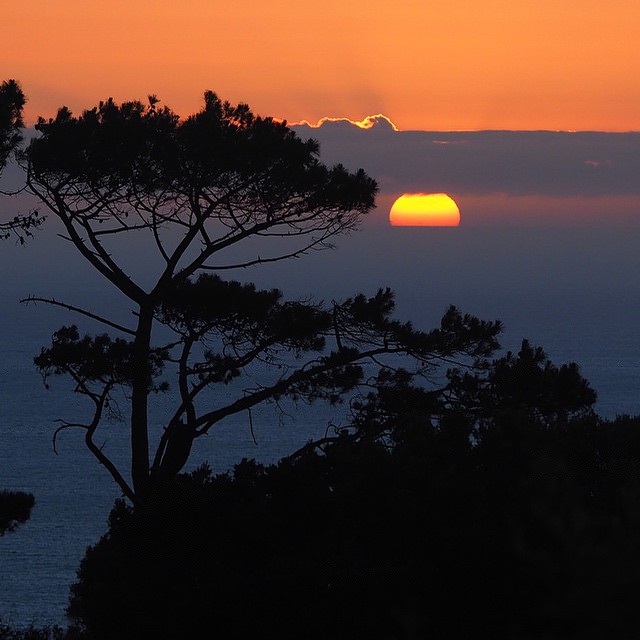
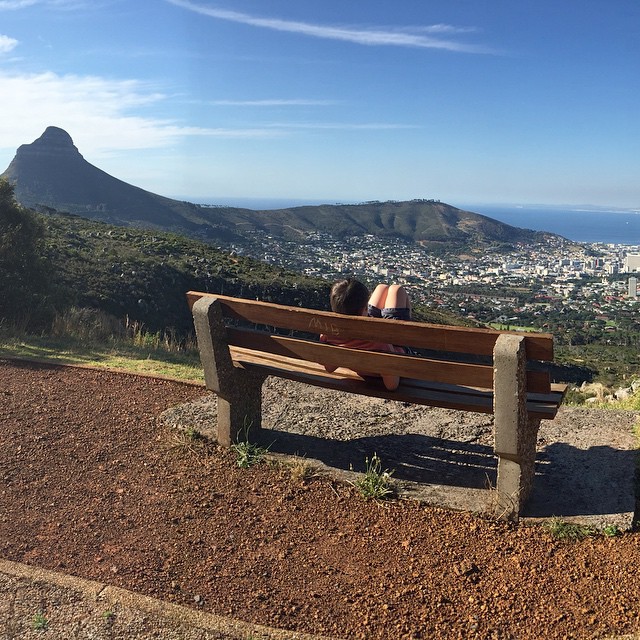
There is an overwhelming number of places to choose from for a safari in South Africa. Not all are created equal and are family-friendly. Some lodges welcome children 6 years of age and older while other lodges require children to be 12 years of age and older. I chose Naledi Game Lodges for our family safari as I had been there a few times and enjoyed the intimate atmosphere and South African family-owned safari lodge. My sons were 4 and 9 years old at the time and were welcome on all the game drives.
Naledi is an award-winning luxury lodge, but you may be surprised at how reasonably priced it is. We stayed at the Naledi Enkoveni lodge which is no longer a part of Naledi Lodges. At the time of our family visits, I hadn’t stayed at Bush Camp. I have since stayed at both lodges and they have a 2-bedroom suite which is perfect for families.
What I love about a safari in a private reserve:
Cons:
Tip: If you visit Naledi Game Lodges, make sure to visit Rosie’s hide while there, it overlooks a waterhole. Enjoy the sounds of the bush and see what comes by for a drink. Check out the 24-hour webcams streaming from Naledi at Rosie’s or from Naledi Enkoveni.
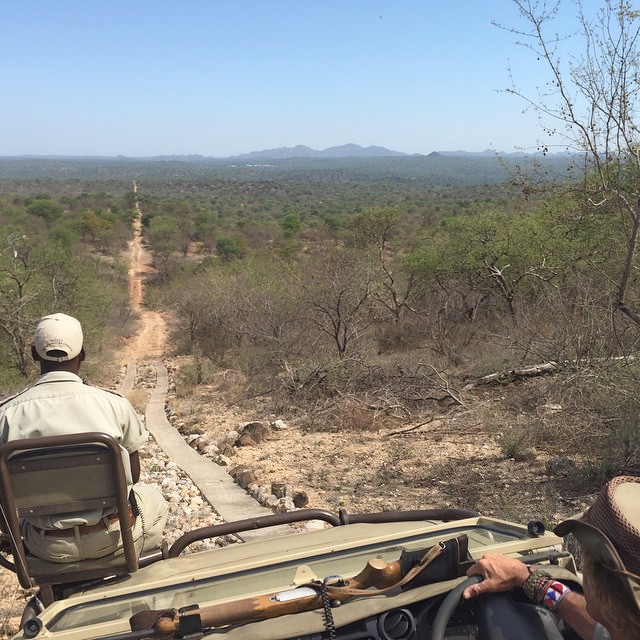
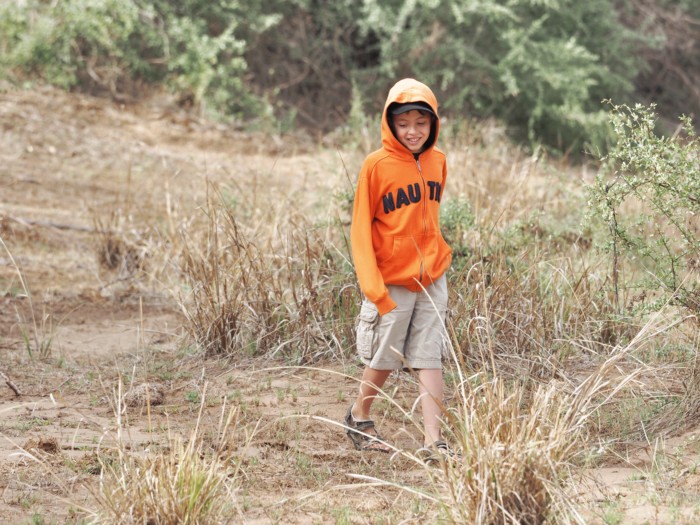
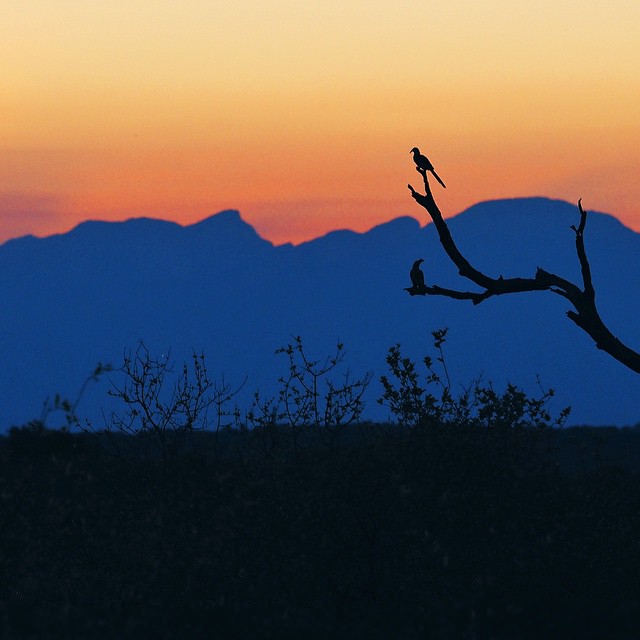
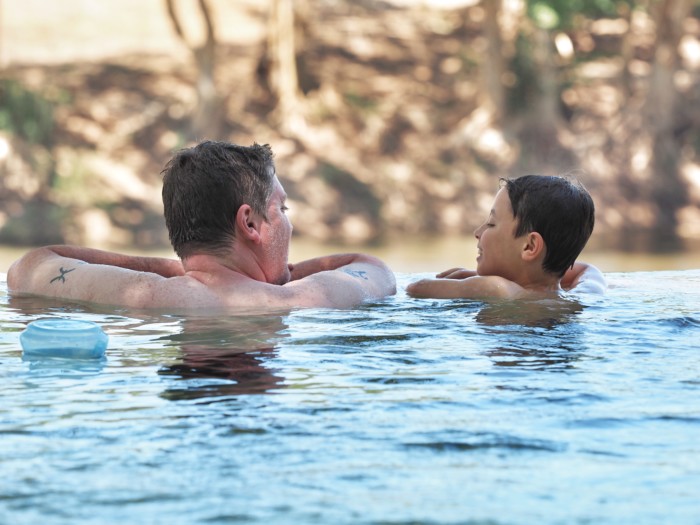
What I love about self-driving Kruger National Park:
Cons:
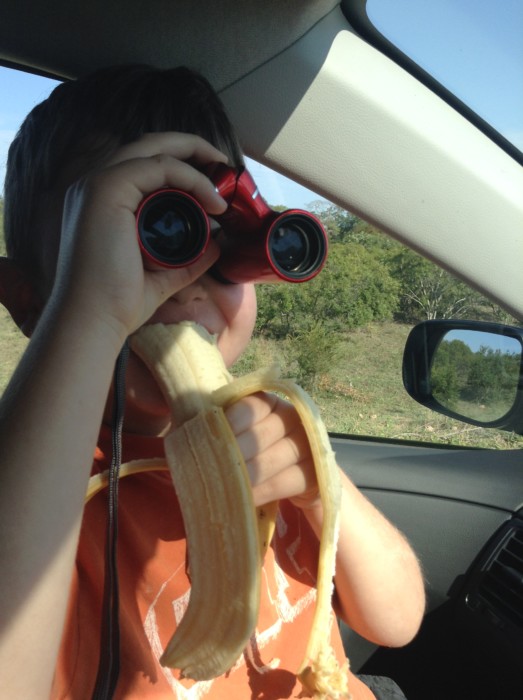
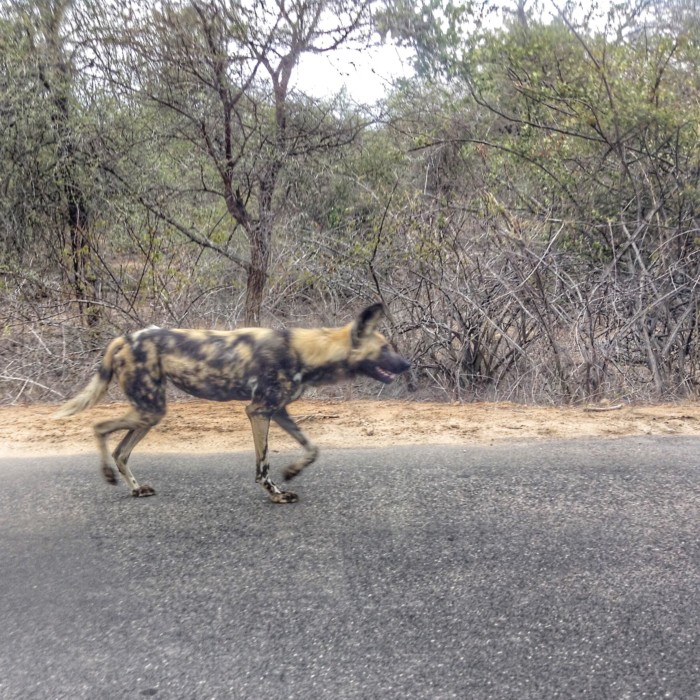
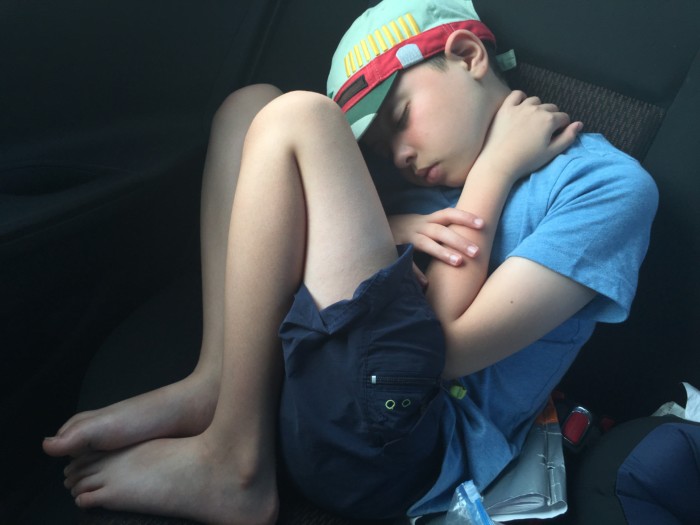
There are many ways to experience a safari in South Africa with your family if you prefer not to drive yourself.
The first time I visited Cape Town, South Africa in December 2012 I heard about a street art tour in Woodstock while staying at The Backpack. Unfortunately I didn’t find time on my schedule for a visit.
Over the last 2 years I’ve seen some of the amazing street art pop up on my Instagram feed by some of my Cape Town Instagrammer friends. Fast forward to my 4th visit to the Mother City this past November (2014) and I just had to get there and see it for myself.
While you can certainly visit Woodstock yourself as I did, I highly recommend taking a street art tour especially if it’s your first time to the city to learn more about the history and the art. You can plan for a visit to the nearby Old Biscuit Mill and make a day of it in this interesting neighbourhood.
Here are some of my favourite murals in Woodstock that I captured with my iPhone.
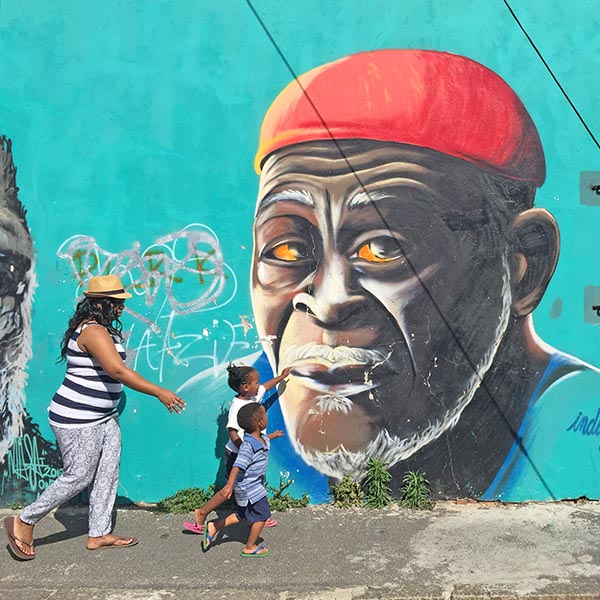
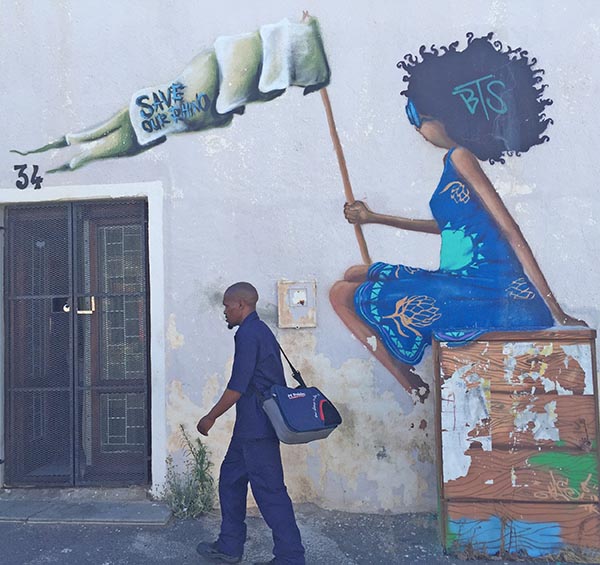
When I was in Senegal, I took Djembe (African drumming) lessons. I learned from a master Djembefola that the djembe was used to communicate between villages in Senegal and West Africa where it is said the djembe originated. It would signal illness, death and celebrations such as marriage and birth. This is my ode to the tradition and a way to celebrate the upcoming birth of the woman’s baby.
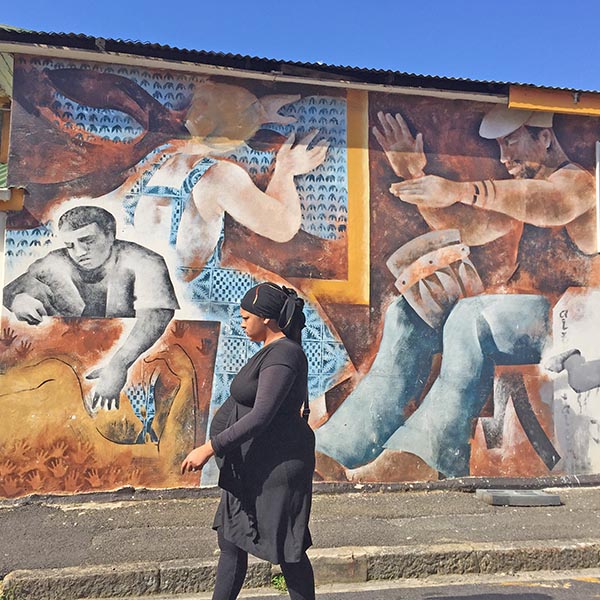
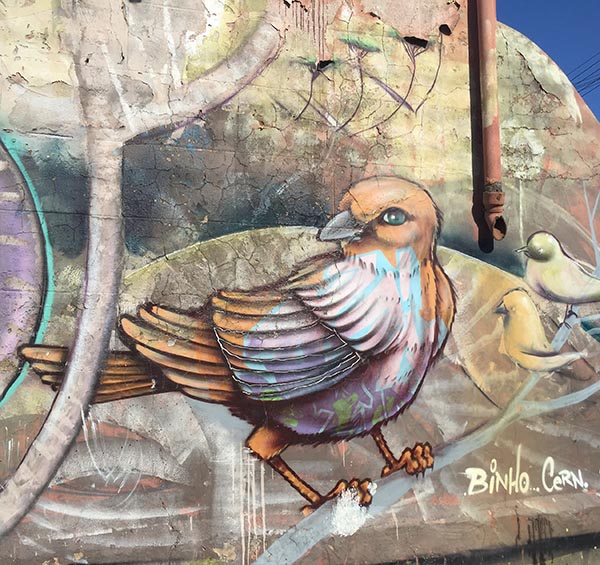
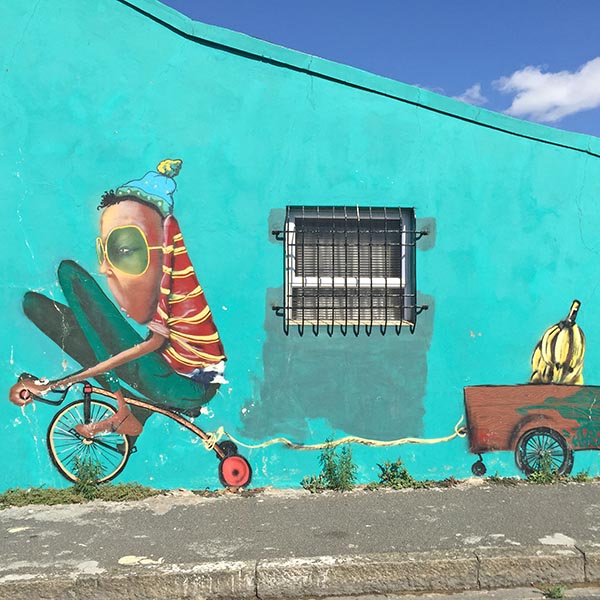
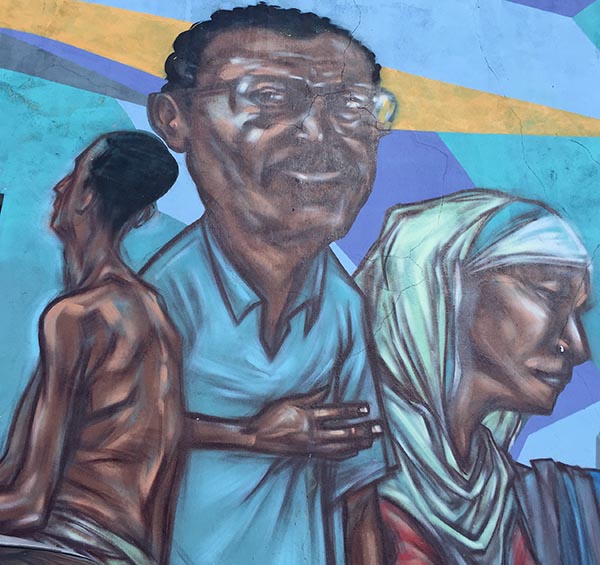
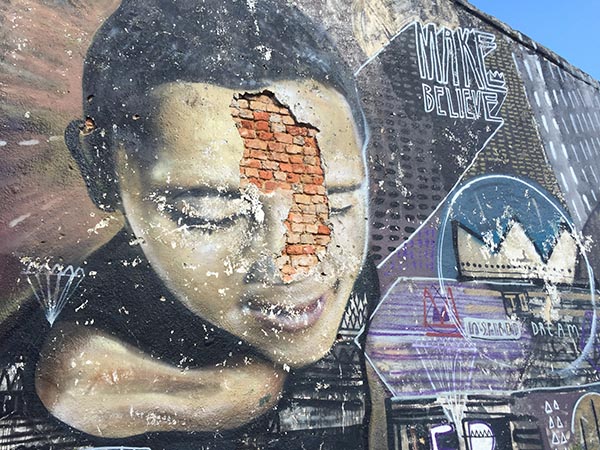
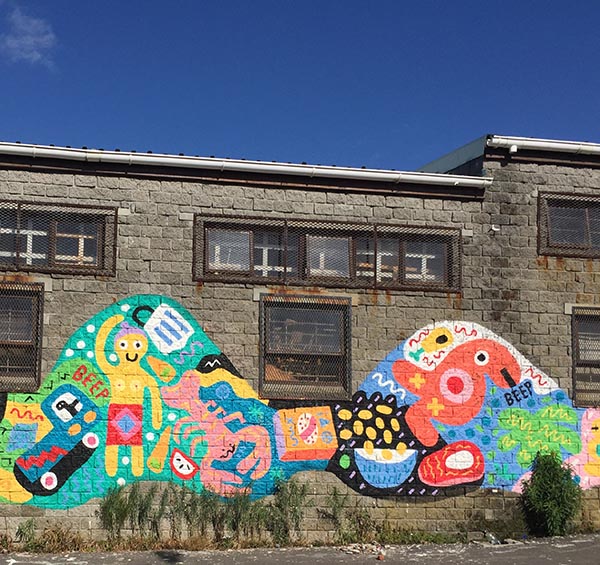
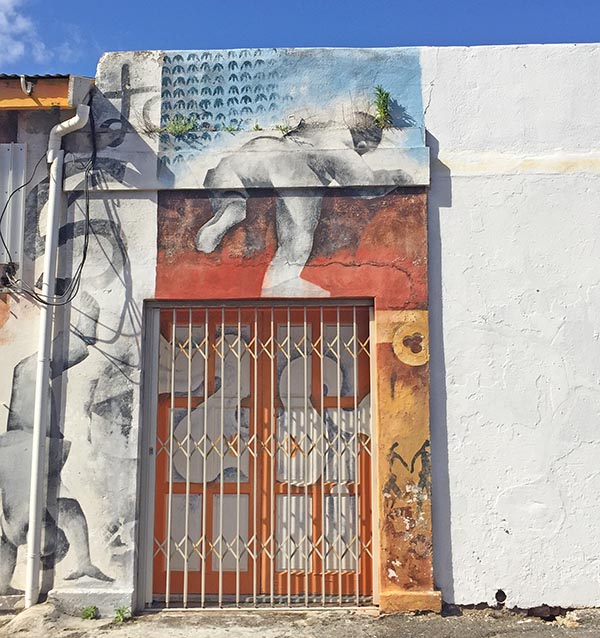
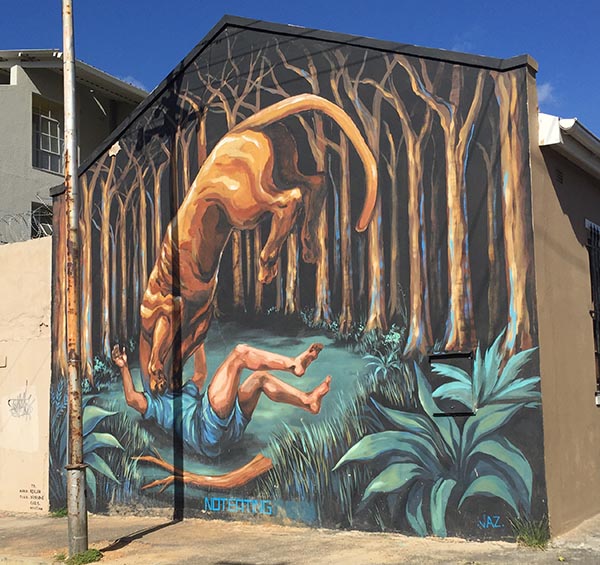
It’s been a great travel year for me and I am grateful for the opportunities, new friends, old friends and for a family that supports me.
In 2014 I returned to a country I love – South Africa, not once but twice! I visited in May and my dad came along. I also returned in November and my family (husband, 4yo & 9yo sons) came with! My dad joined us a week later. My visits to South Africa are always so inspiring and wonderful and never long enough.
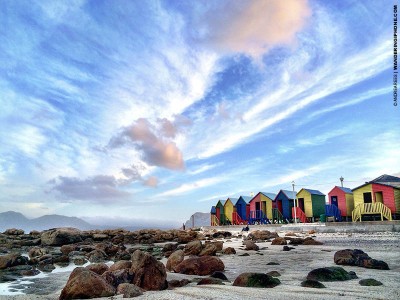
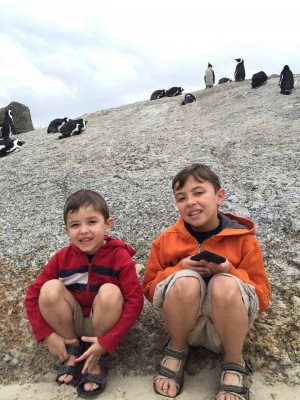
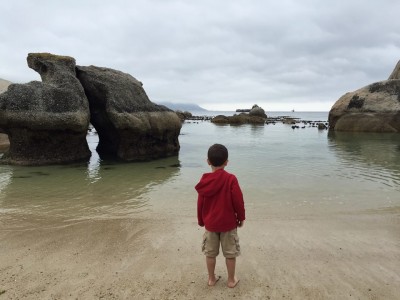
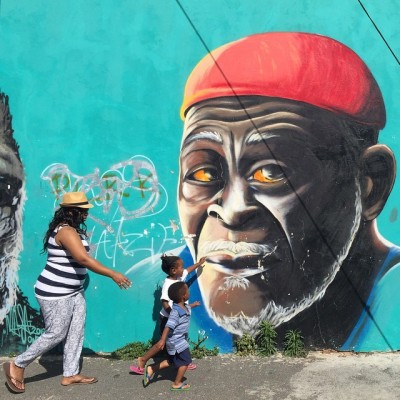
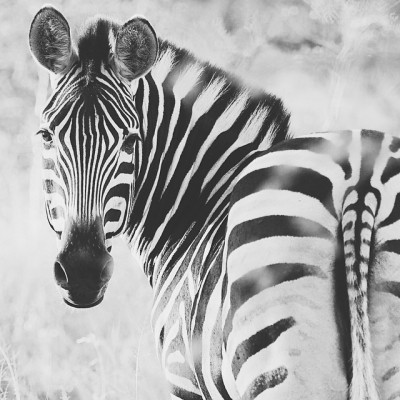
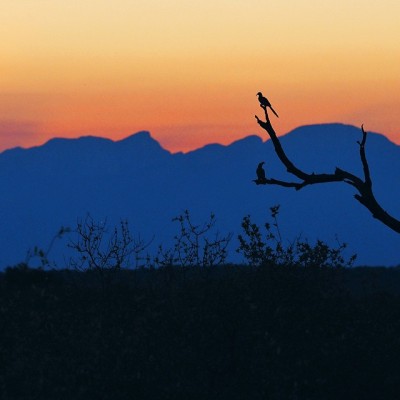
The reason for my return to South Africa was because of a women’s mobile photography development initiative I founded and started there in November 2013, The Heart of a Woman Project. I visited in May to launch phase 2 and my father came with to meet the ladies and offer some help. I returned once more in November to celebrate our 1st anniversary with an exhibition and cultural celebration and was very happy to have my husband & 2 sons (9 & 4) with me.
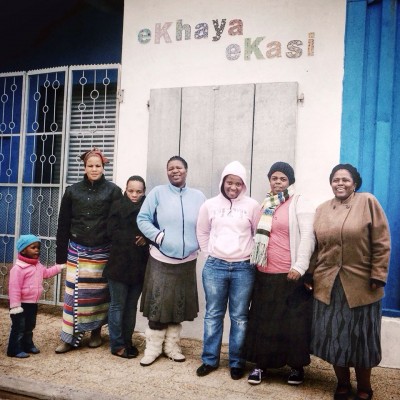
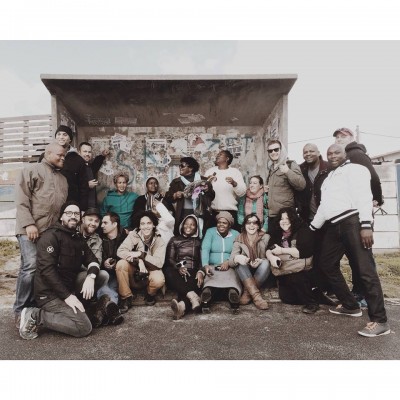
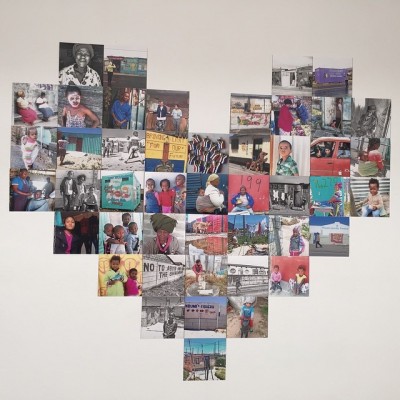
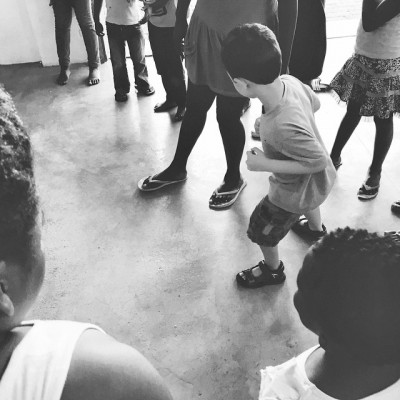
On the way to South Africa, we had an overnight layover in London, England. Mostly we stayed near the airport in hopes that my sons would adjust a bit to the time difference so they could handle the further 2 hour difference between GMT and SAST. It seemed to work and they adjusted well. It also helped to avoid 2 back to back overnight flights. We took off to Windsor before checking in for our flight. Windsor was about 25 minutes from Heathrow, it’s a quaint town and a good layover visit. We saw Windsor Castle from the outside only and had lunch in a local pub. It was my son’s 1st visit to Europe, we’ll have to go back for a proper one.
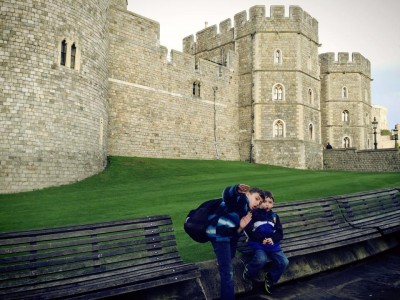
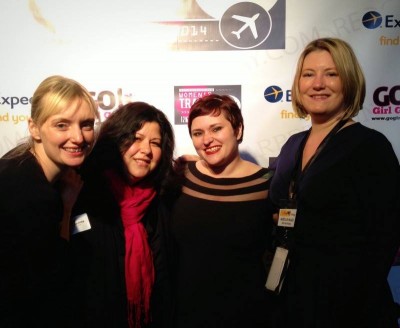
I went to New York City in March for the Women’s Travel Fest and again in October for National Geographic Traveler’s seminar on Storytelling Photography with Ami Vitale and Melissa Farlow, two well respected National Geographic photographers. I’ve been a professional photographer since 2003 and have been following Ami’s incredible work since that time. It was great to meet her in person and to learn from her.
New York is a great city for solo travel and I love to see a show on broadway, discover a restaurant and observe what’s happening around the city. While walking back to my hotel after seeing a show on Broadway, I came across this scene in Times Square. At first it was just this young man with his sign and then this half dressed man came by and started dancing, things got interesting.
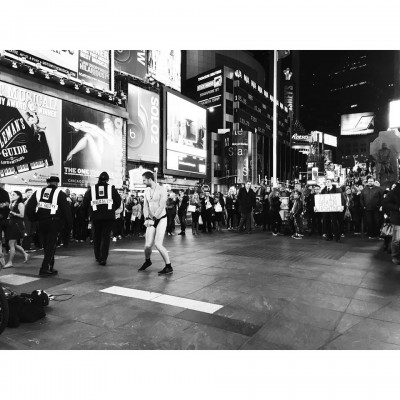
I am also grateful to have been able to get in a short visit but with quality time with dear friends in Vancouver (my home away from home) and Saskatoon in Canada in April.
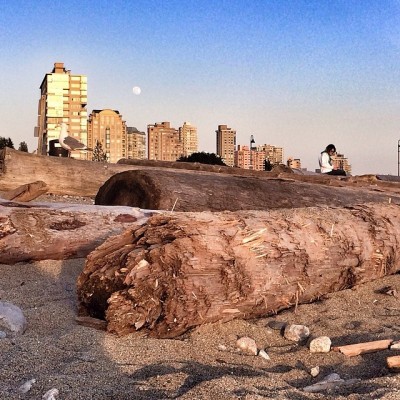
Between all the travel both solo and with family, I also managed to visit some our family favourites nearer to home – Niagara Falls in February and June and the Kawartha Lakes in August.

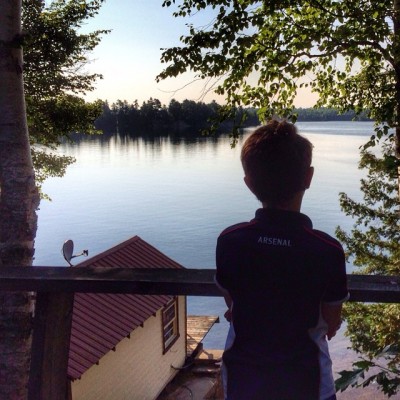
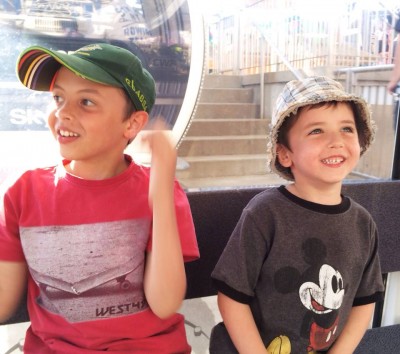
Lastly, I added 2 new cities to my travels, Albuquerque and Santa Fe, New Mexico in July. I was in Santa Fe for the International Folk Art Market that hosts artisans from around the world. From their website – “Celebrates the humanity of the handmade that empowers communities through monumental earnings.”
There were so many talented artists with their incredible handmade work. It was like travelling around the world in a day. The highlights were visiting the artists and learning more about the work from Myanmar (Burma), South Africa and Haiti. I met a man and his family that represents the last 30 puppeteers of Myanmar. It’s a dying tradition that dates back 600 years. You can read about it here.
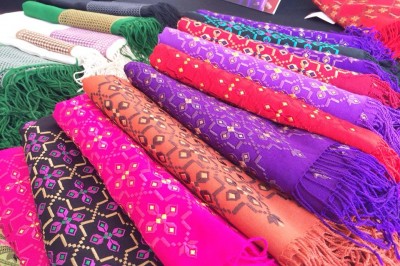
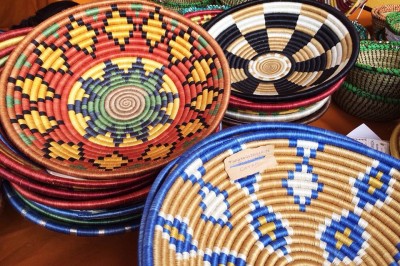
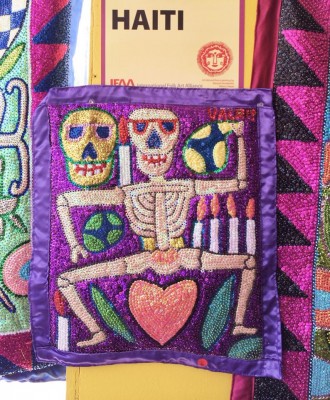
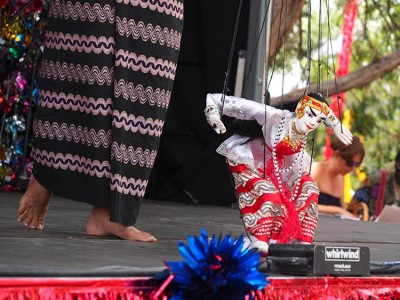
I also got a chance to drive a bit of Route 66 in Albuquerque.
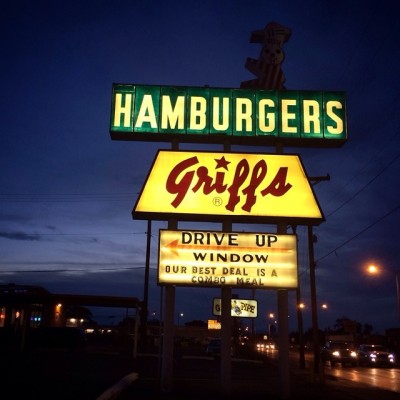
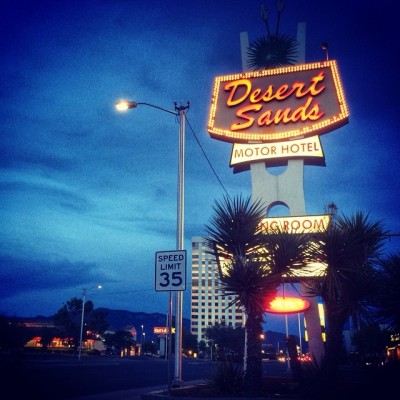
It’s been great to go through my photos of the last year and relive some memories. I hope you’ve enjoyed seeing some images from the destinations I visited in 2014.
Sharing 2 quotes I love and perfect for starting the new year –
Wishing you new beginnings, magic, dreams and safe travels in 2015, the best is yet to come!
Until next time,
Andrea
…and my wandering iPhone